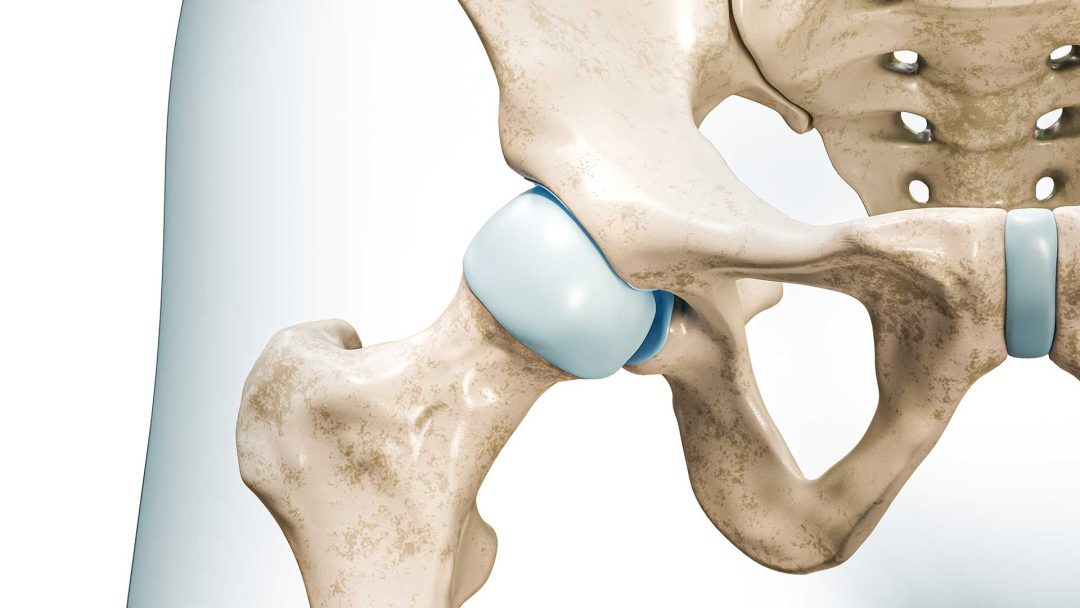Bone Cancer

Bone cancer, also known as osteosarcoma, is a rare but very serious cancer that mainly affects teenagers and young adults. The bone tissue is affected by a malignant tumor, which significantly restricts the function of the bone and can spread to surrounding tissue.
Classic symptoms include pain in the musculoskeletal system, swelling and restricted movement.
Treatment often involves a combination of chemotherapy, radiotherapy and surgery to remove the tumor.
What is Bone Cancer?
Bone cancer is a cancer that affects the bone tissue, leads to functional limitations and can be fatal. All areas of the skeleton can be affected by bone cancer.
There are different types of bone cancer, including osteosarcoma, Ewing’s sarcoma and chondrosarcoma. These cancers differ in terms of the cells from which they arise, their biological characteristics, aggressiveness and treatment approaches.
Bone cancer can also arise from a metastasis of a primary tumor elsewhere in the body. Bone is a common tissue type where metastases can colonise.
Types of Bone Cancer
Bone cancer can develop from different cells of the bone and therefore result in different symptoms and treatment strategies.
The most common form is osteosarcoma, followed by chondrosarcoma and Ewing’s sarcoma. There are other types of bone cancer, including benign growths. However, these are very rare.
Comprehensive diagnostics are necessary to differentiate between the different forms so that the appropriate treatment can be initiated promptly.
Osteosarcoma
Osteosarcoma, the most common type of bone cancer, particularly affects children and young adults and develops from cells that are responsible for bone formation.
It particularly affects the long bones of the arms and legs. These swell as a result of the disease but often cause no pain.
Chondrosarcoma
Chondrosarcoma is a cancer that develops from the cartilage cells of the bone. It occurs more frequently in adults, but can also affect adolescents.
Unfortunately, the disease remains asymptomatic for a long time and is only diagnosed at a late stage, as it only manifests itself late through non-specific pain.
As the tumor is largely resistant to radiotherapy and chemotherapy, a complete resection is usually performed.
Ewing's sarcoma
Ewing’s sarcoma is a rare type of bone cancer that mainly affects children and adolescents up to the age of 15.
It originates from the nerve cells of the bones and causes localised swelling, functional limitations, pain and fever.
Localisation of Bone Cancer
Bone cancer can affect various bones in the body and lead to different symptoms. Classically, the long tubular bones such as the upper arm, thigh, shin and forearm are affected, but smaller bones such as the fingers, hand, foot and jaw can also be affected. Occasionally, the knee, shoulder and head are also affected by bone cancer.
Bone metastases however, often affect the spine, hips and ribs.
Causes of Bone Cancer
The exact risk factors for bone cancer are often unclear and vary from case to case.
Genetic factors, exposure to radiation, bone lesions and certain pre-existing conditions, such as retinoblastoma, are known risk factors, but are not usually the sole cause of bone cancer.
Aspects such as hidden micronutrient deficiencies, immune disorders, silent inflammation, intestinal health and toxin exposure can also play a significant role in the development of bone cancer.
Symptoms of Bone Cancer
The symptoms can vary considerably depending on the bones affected and the stage of the disease.
Typical symptoms include pain, swelling, restricted movement, increased risk of fractures, tiredness and exhaustion.
Bone cancer can also cause damage to surrounding nerve tracts, which can lead to restricted movement and sensory disturbances.
Symptoms such as anaemia, coagulation disorders and susceptibility to infections can also become noticeable with bone cancer.
As these symptoms are very unspecific and overlap with other diseases, diagnosis can be difficult.
Diagnosis of Bone Cancer
Methods for detecting or diagnosing bone cancer include MRI and CT imaging, blood tests and bone marrow biopsy. The bone tissue sample is then examined under a microscope in a histological laboratory. This biopsy provides the doctor with valuable information about the malignant cells.
Treatment of Bone Cancer
Treatment strategies for bone cancer vary depending on the stage of the tumor, the type of tumor, the bones affected and the patient’s state of health.
Traditionally, chemotherapy is administered preoperatively to shrink the tumor. Additionally, it is surgically removed.
Integrative medicine offers approaches that can increase the quality of life during treatment and improve the prognosis of conventional therapies.
In order to find the right therapy for you, you can communicate your wishes and concerns openly and confide in experienced doctors.
Surgery
Surgery is an important treatment strategy for bone cancer. The aim is to remove the tumor completely without damaging healthy structures. Depending on the location and size of the tumor, support elements made of titanium may need to be inserted to maintain the strength of the bone.
Chemotherapy and Radiotherapy
Chemotherapy and radiotherapy are also used in the treatment of bone cancer. They are often used before an operation to shrink the tumor and make the operation easier.
In order to find the best strategy for you, it is important to communicate openly with your doctor.
Hyperthermia
In hyperthermia, the tumor tissue is pre-treated by applying heat locally in order to kill the malignant cells. This improves the prognosis of cancer therapy and makes the recurrence of a tumor less likely.
There are various hyperthermia procedures that can be used to treat bone cancer. You should consult your doctor for more detailed information.
Hyperthermia reduces migration of osteosarcoma by suppression of autocrine motility factor
Hyperthermia in the Treatment of Post-Actinic Osteosarcomas: Our Anecdotal Experience
Effect of elevated temperature on experimental swarm rat chondrosarcoma
Mistletoe Therapy
Mistletoe therapy can also be used to support traditional bone cancer therapy in order to increase the effect of the treatment.
Mistletoe extract is administered orally or by injection. The advantages are generally positive effects on blood values and health, as well as possible suppressive effects on tumor growth.
End-stage Bone Cancer
In terminal bone cancer, the prognosis of therapy is significantly reduced as the cancer has already spread throughout the body.
The aim is to work with the patient to find a suitable therapeutic approach that alleviates symptoms and also improves quality of life.
Bone Metastases
Bone metastases are cancer cells that have detached from their place of origin and colonised the bone. This happens in advanced stages of primary cancers and significantly worsens the prognosis. The types of cancer that can form bone metastases include prostate cancer, breast cancer, lung cancer, malignant melanoma, thyroid cancer and liver cancer.
The symptoms of bone cancer are then added to the symptoms of the primary disease.
Dr. med. Karsten Ostermann M.A.
Bone cancer is a serious condition that is most often treated with chemotherapy, radiotherapy and surgery to remove the tumour. Additionally, integrative and individualised plans can help maintain the quality of life.

Frequently Asked Questions and Answers about Bone Cancer
Bone cancer can be a very overwhelming situation, especially for parents whose child is affected. It is therefore important that key questions are clarified and that everyone involved is aware of the context of the disease.
Below we address the most frequently asked questions. If you have any further questions, please do not hesitate to contact your doctor.
Life expectancy and chances of recovery depend on the stage of the tumor, the type of cancer, the general health of the patient and the treatment strategy.
Osteosarcoma has a 5-year survival rate of almost 70% when treated with chemotherapy and surgery.
For Ewing’s sarcoma, the 5-year survival rate is 60%.
It is important to note that these values can vary greatly from individual to individual and depend heavily on the type of treatment.
If bone cancer is detected early, before it spreads to other structures, a complete cure is possible. However, this always depends largely on the individual case.
Yes, there are also benign bone tumors. However, they usually grow more slowly and do not spread to surrounding structures.
Even if they are not life-threatening, they may still cause problems with everyday activities and require surgical treatment.
There are some blood values that can be altered in bone cancer. For example, the number of red blood cells, tumor markers or minerals such as calcium and phosphate.
However, this always depends on the type of tumor and cannot be answered in general terms.
Unfortunately, bone cancer is usually only recognised late, as it is asymptomatic in the early stages. The first signs can be pain in movement, bone swelling, exhaustion and weight loss.
If you experience any of these symptoms, you should consult your doctor to rule out serious medical problems.
Further information
The information listed contains relevant topics and serves to improve understanding.